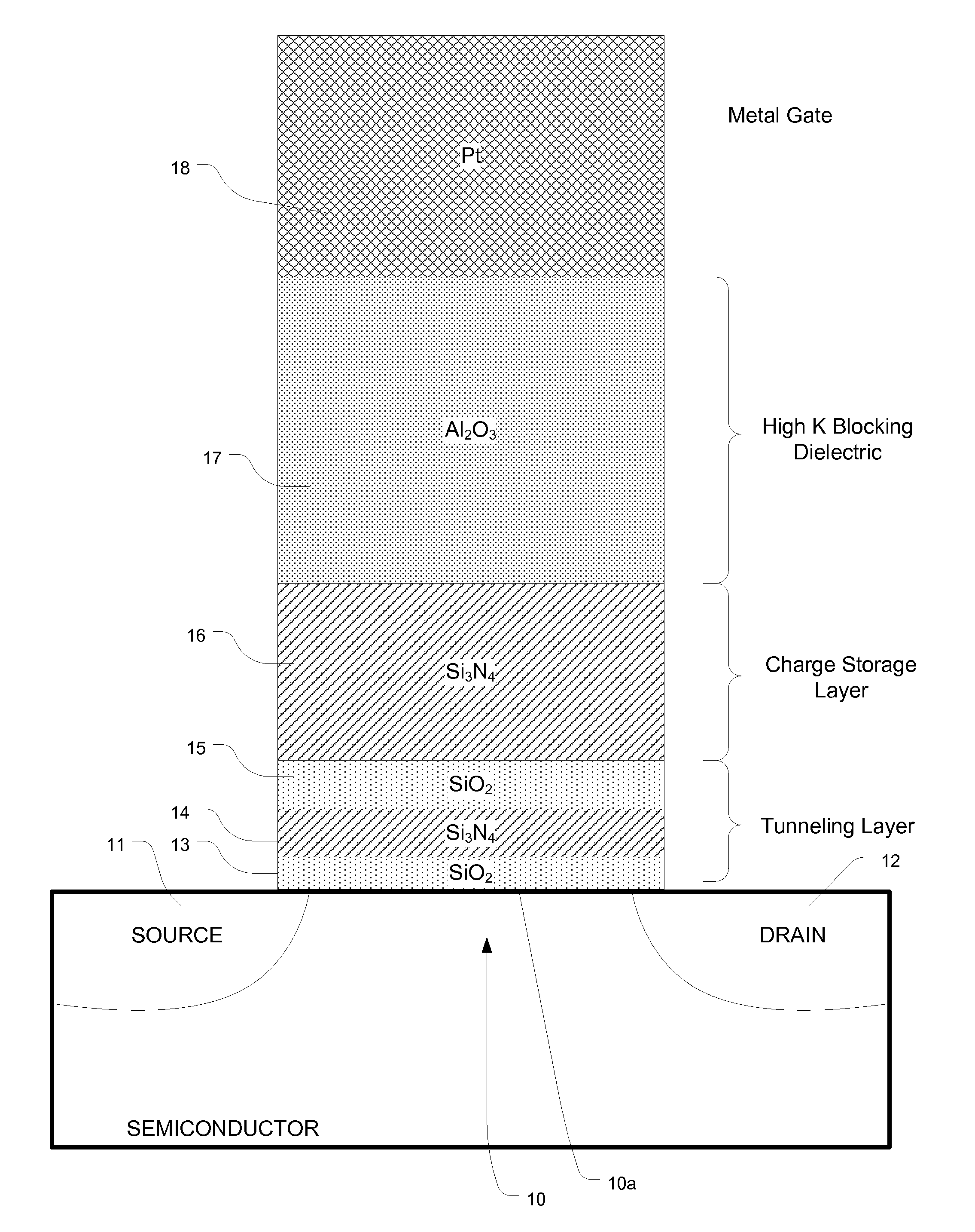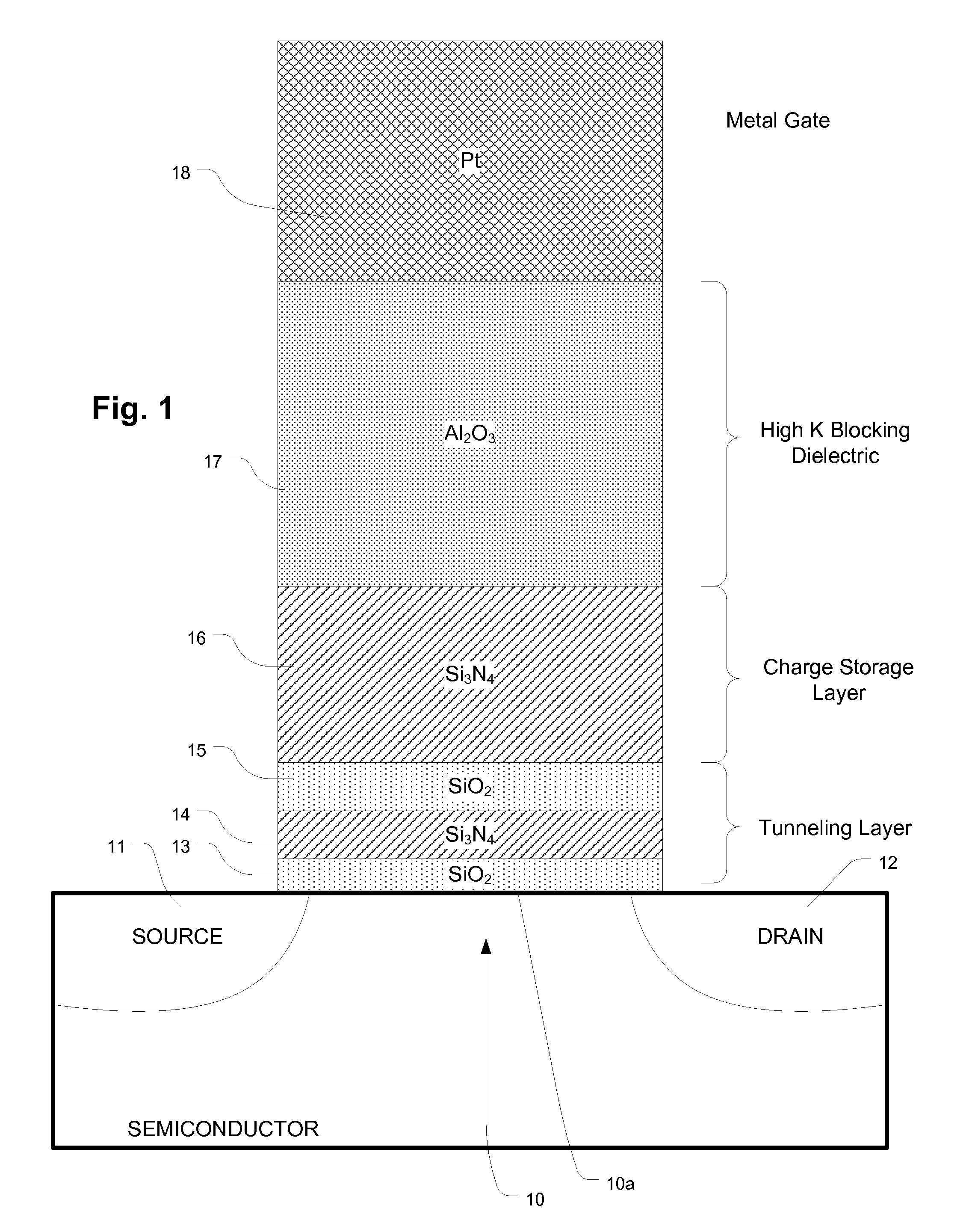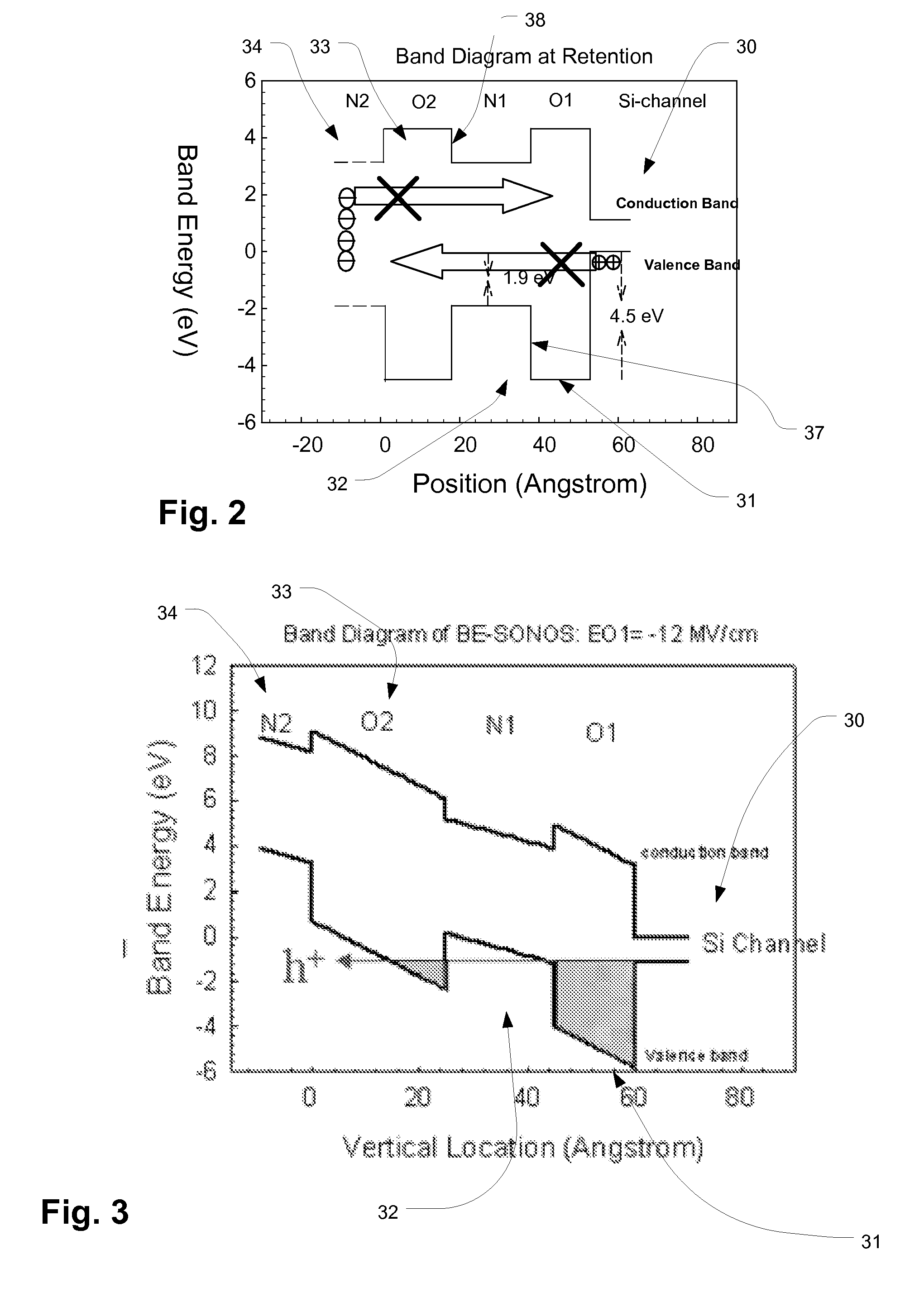Charge trapping memory cell with high speed erase
a memory cell and high-speed erase technology, applied in the field of flash memory technology, can solve the problems of limiting the ability to increase the density of flash memory, affecting the performance of flash memory, so as to achieve high speed, eliminate the hole tunneling barrier, and effectively prevent the effect of charge leakag
- Summary
- Abstract
- Description
- Claims
- Application Information
AI Technical Summary
Benefits of technology
Problems solved by technology
Method used
Image
Examples
Embodiment Construction
[0036]A detailed description of embodiments of the present invention is provided with reference to the FIGS. 1-15.
[0037]FIG. 1 is a simplified diagram of a charge trapping memory cell employing a high κ blocking dielectric layer and a band gap engineered dielectric tunneling layer. The memory cell includes a channel 10 in a semiconductor body, and a source 11 and a drain 12 adjacent channel.
[0038]A gate 18 in this embodiment comprises platinum having a work function of about 8 electron volts eV. Preferred embodiments employ metals or metal compounds for the gate 18, such as platinum, tantalum nitride, aluminum or other metal or metal compound gate materials. It is preferable to use materials having work functions higher than 4.5 eV. A variety of high work function materials suitable for use as a gate terminal are described in U.S. Pat. No. 6,912,163, referred to above. Such materials are typically deposited using sputtering and physical vapor deposition technologies, and can be patt...
PUM
 Login to View More
Login to View More Abstract
Description
Claims
Application Information
 Login to View More
Login to View More - R&D
- Intellectual Property
- Life Sciences
- Materials
- Tech Scout
- Unparalleled Data Quality
- Higher Quality Content
- 60% Fewer Hallucinations
Browse by: Latest US Patents, China's latest patents, Technical Efficacy Thesaurus, Application Domain, Technology Topic, Popular Technical Reports.
© 2025 PatSnap. All rights reserved.Legal|Privacy policy|Modern Slavery Act Transparency Statement|Sitemap|About US| Contact US: help@patsnap.com



